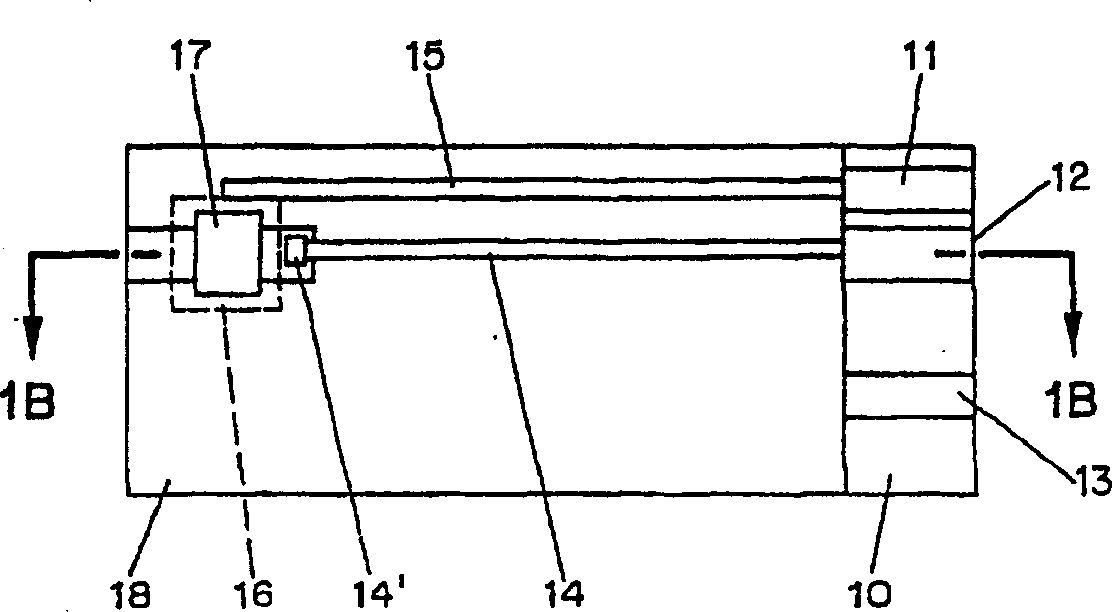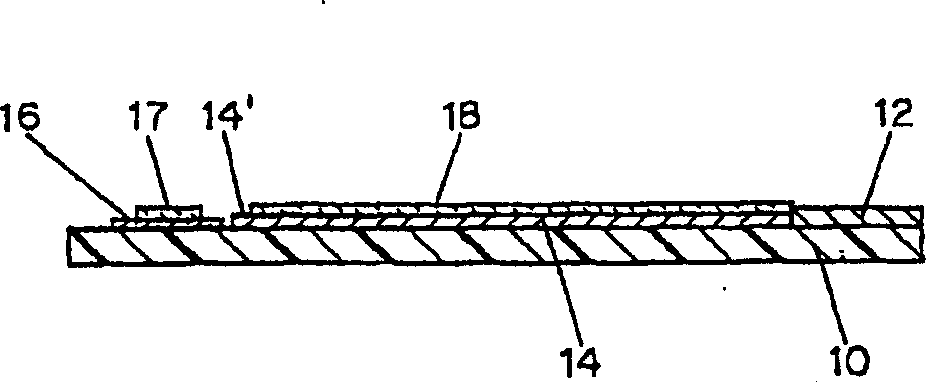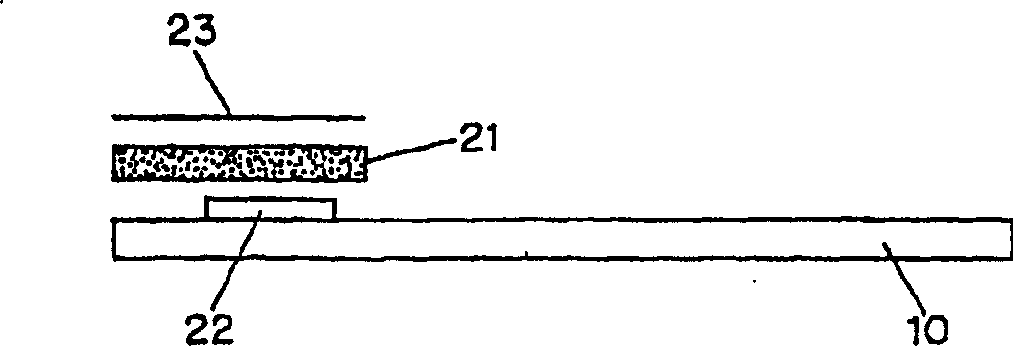Disposable test strips with integrated reagent/blood separation layer and forming method thereof
A disposable, isolation layer technology, applied in the direction of biochemical equipment and methods, microbial measurement/inspection, biological testing, etc., can solve the problems of increased cost, smaller effective electrode area, and adverse effects on accuracy
- Summary
- Abstract
- Description
- Claims
- Application Information
AI Technical Summary
Problems solved by technology
Method used
Image
Examples
Embodiment 1
[0052] A non-conductive preparation for preparing the integral reagent / blood barrier layer 17 was prepared as follows. By adding 0.1 M citric acid, 100 ml of the aqueous phase of 20 mM trisodium citrate aqueous solution was adjusted to pH6. Add 6 g of hydroxyethyl cellulose (HEC), and homogenize and mix. The mixture was left overnight and allowed to bubble and dispersed, and then used as a storage solution for the coating composition.
[0053] In 50 grams of HEC solution, 2 grams of Cab-o-Sil silica and 0.1 grams of DowCorning antifoam compound were gradually added manually until 4 / 5 of the total amount was added. While homogenizing and mixing, add the rest. The mixture was then cooled in the refrigerator for 10 minutes. Then add 8 g of potassium hexacyanoferrate (III) and mix until completely dissolved. Finally, 0.8 g of glucose oxidase preparation (250 units / mg) was added, and then mixed completely until dissolved. The resulting formulation can be used for printing or refrigerat...
Embodiment 2
[0055]To prepare glucose test strips using the slurry formulation of Example 1, screen printing was performed in a series of patterns on a 330 micron polyester substrate (Melinex329). The first step is to print a carbon pad. The polyester substrate was printed with EC2 carbon (Ercon), and a 10×50 carbon pad array was formed on the surface. Then, the printed substrate is passed through a heating dryer, and can be cured at a high temperature (such as 70° C.) for 1-3 weeks.
[0056] Next, use ERCON R-414 (DPM-68) 1.25 bioelectrode sensor coating material to print an array of silver / silver chloride connection tracks and contacts on the substrate, and dry. For each carbon pad in the array, a working rail in contact with the carbon pad and a reference rail are printed.
[0057] The dielectric layer was then printed with ERCON R488-B(HV)-B2 blue. The pattern printed on the dielectric layer covers almost all of each device, only exposing the contacts, the head of the reference electrode a...
Embodiment 3
[0061] Put the test strip manufactured in the manner of Example 2 with the slurry of Example 1 in a measuring meter, and add a voltage of 500mV to test blood with different glucose concentrations and a hematocrit between 40% and 60%. sample. Figure 3A-3C Shows the relationship between the current measured 25 seconds after applying the voltage and the glucose concentration, and Figure 4 Is the slope of the glucose response plotted as a function of hematocrit. It can be seen that the result is that the reproducibility of the current is very good, basically independent of the hematocrit.
PUM
 Login to View More
Login to View More Abstract
Description
Claims
Application Information
 Login to View More
Login to View More - R&D
- Intellectual Property
- Life Sciences
- Materials
- Tech Scout
- Unparalleled Data Quality
- Higher Quality Content
- 60% Fewer Hallucinations
Browse by: Latest US Patents, China's latest patents, Technical Efficacy Thesaurus, Application Domain, Technology Topic, Popular Technical Reports.
© 2025 PatSnap. All rights reserved.Legal|Privacy policy|Modern Slavery Act Transparency Statement|Sitemap|About US| Contact US: help@patsnap.com



